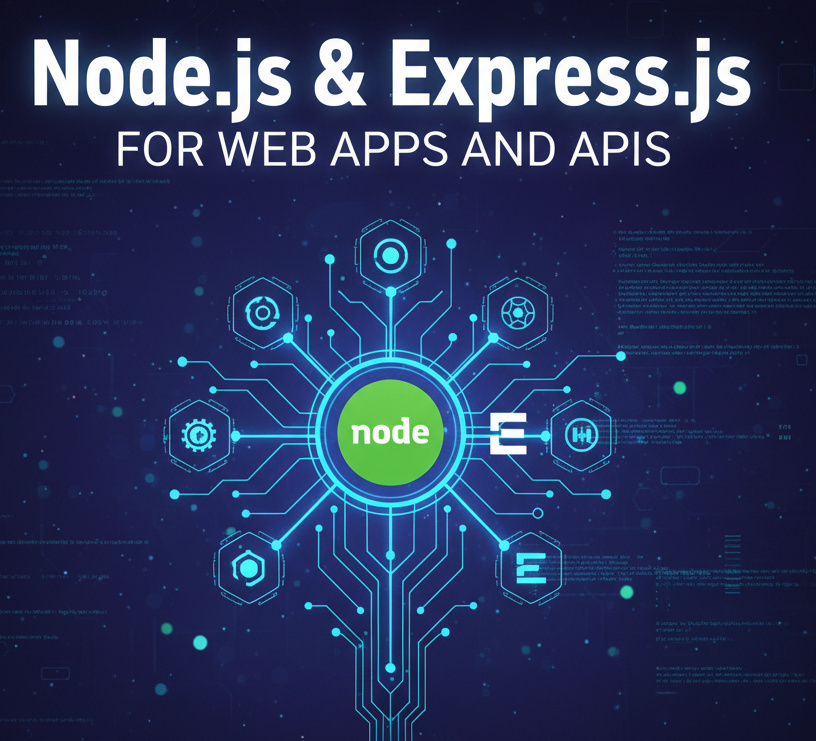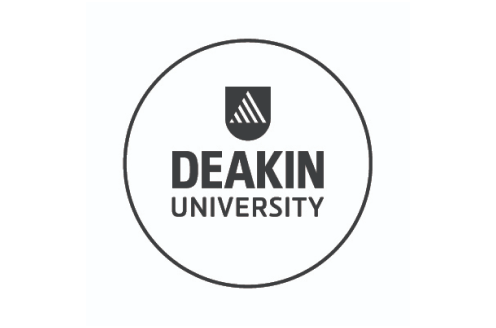- Great Learning
- Free Courses
- Data Science
Free SQL for Data Science Course
SQL for Data Science
Enroll in our free course on SQL for Data Science and learn techniques to organize and manage huge datasets for data science purposes. Get hands-on experience to work with python for SQL queries on Data Science projects.
Instructor:
Ms. Sampriti ChatterjeeSQL for Data Science
171.6K+ learners enrolled so far
Stand out with an industry-recognized certificate
10,000+ certificates claimed, get yours today!
Get noticed by top recruiters
Share on professional channels
Globally recognised
Land your dream job

Skills you will gain
Data Analysis
SQL
SQL With Python
SQL Clauses
GROUP BY Statement
HAVING Clause
Aliases In SQL
Inner Join
Left Join
Right Join
Full Join
Self Join
Subqueries
Python Concepts With SQL
+9 More
Key Highlights
Get free course content
Master in-demand skills & tools
Test your skills with quizzes
About this course
This course will introduce you to prominent SQL operations to perform Data Science tasks, with a few demonstrated examples. The course begins with discussing clauses in SQL and continues with other statements such as GROUP BY, ALIAS, JOINS and their types, i.e., INNER JOIN, LEFT JOIN, RIGHT JOIN, FULL JOIN, and SELF JOIN. You will also learn to work with subqueries, their types, and execution, after which you shall understand Python concepts with SQL and its popularity. The course comprehends a guide to Python installation. The course also includes assessments to evaluate your gains. Complete the course for free and avail your certificate. We allude you to the attached materials for reference.
After this free, self-paced, beginner's guide to SQL for Data Science, you can enroll in PG Programme in Data Science and embark on your career with the professional Post Graduate certificate and learn various concepts in depth with millions of aspirants across the globe!
Course outline
Course Overview
SQL is a query processing language and Data Science is all about managing and manipulating data. This SQL for Data Science course gives you insights on how SQL is used in Data Science applications.
Intro to Clauses
This section discusses clauses. You shall understand to fetch data from a single table or by combining multiple tables using GROUP BY and HAVING statements.
Group By Statement
This section helps you understand GROUP BY statements in SQL and learn to group the elements based on conditions written after the query statement.
Demo for Group By Statement
This section will help you have practical exposure to group elements using GROUP BY clauses in the tables using the GROUP BY statement. It is handy to fetch data when the criterion is known.
Having Clause Statement
This section discusses the HAVING clause and explains the aggregation in the instances it is used.
Demo For having Clause
This section will demonstrate the HAVING clauses mentioned in the previous section with examples through which you will understand when and where to use the HAVING clause.
Alias in SQL
Alias is used to make table and column names more readable. You will learn to assign a temporary name to a table or a column in a table in this section.
Joins in SQL
This section briefs Joins in SQL and discusses statements that fetch all the results in different tables meeting the condition.
Types of Joins in SQL
This section defines Right Join, Left Join, Inner Join, Full Outer Join, Self Join, and Cross Join. You will understand how all of these joins return values based on the input statement and conditions.
INNER Join
You will learn to return the expected values in different tables based on the input condition using demonstrated examples using the INNER JOIN statement.
LEFT Join
This section briefs on how to return all the elements in the first table and the common elements in the other tables based on the input condition with demonstrated examples using the LEFT JOIN statement.
RIGHT Join
In this section, you will learn to return all the elements in the last table and the common elements in the other tables based on the input condition with demonstrated examples using the RIGHT JOIN statement.
FULL Join
You will learn to return all the values in both the tables based on the input condition, regardless of their commonalities, using demonstrated examples using the FULL JOIN statement.
SELF Join
You will learn to return the values of the same table depending on the input condition given by the user using demonstrated examples using the SELF JOIN statement.
Intro to Subquery
It is also called Sub-Selects or Nested Queries. This section helps you learn to write a query within another query.
Problem Statement
A problem statement is a scenario with defined elements to be achieved at the end of the query processing. You will learn to solve and work with problem statements in this section.
What is a Subquery?
A subquery is a nested query command within another query. It is also called Sub-Selects, and it returns the value that meets the requirements of both queries. You will understand the details in this section.
How Subquery Executes?
Each subquery is executed for every row of the outer query. A correlated subquery evaluated each row processed by the parent statements. SELECT, UPDATE, and DELETE statements are the parent statements. You will understand how a subquery executes in this section.
Type of Subquery
This section discusses single-row subquery, multiple row subquery, multiple columns subquery, correlated subquery, and nested subquery to understand the subquery concept.
Demo for Subqueries
This section will help you understand each subquery with demonstrated examples.
Introduction to SQL with Python
This section discusses how to use SQL queries written on Oracle in Python. You will also learn how SQL can alternatively be used directly in Python in the latter part of this section.
History of Python
This section comprehends the history of Python programming. It talks about the simplicity and user-friendly language exhibits with inbuilt libraries used to develop user-friendly applications.
Why Should You Learn Python?
Python is the most uncomplicated and sophisticated programming language, both easy to learn and use. It also reduces time spent on coding since it has built-in libraries to support high-end applications.
Why is Python So Popular?
Python is popular since it is coded like the English communication language, and it is simple to learn and code. You will understand other reasons why Python programming is prevalent in this section.
Installing Python
This section will demonstrate how to install Python with step-by-step explanations. You can follow the steps to install it on your PC.
MySQL with Python Demo
You will learn how to use MySQL with Python with a demonstrated sample problems.
Get access to the complete curriculum once you enroll in the course
Stand out with an industry-recognized certificate
10,000+ certificates claimed, get yours today!
Get noticed by top recruiters
Share on professional channels
Globally recognised
Land your dream job

SQL for Data Science

4.5 Hours
Intermediate
171.6K+ learners enrolled so far
Get free course content
Master in-demand skills & tools
Test your skills with quizzes
Refer and earn
Get learning discounts up to $20
Level up with advanced skills & become job ready with Pro+
Subscribe to Pro+ today to build skills with 50+ Pro courses and prep for jobs with advanced AI tools.


Master Data Analytics in SQL & Excel

Practice exercises

Certificate from Microsoft

AI Resume Builder

AI mock interviews
Get course + certificate with Pro+ subscription
Learner reviews of the Free Courses

5.0

5.0

5.0

5.0
5.0

5.0

5.0

5.0

5.0

5.0
What our learners enjoyed the most
Skill & tools
65% of learners found all the desired skills & tools
Our course instructor

Ms. Sampriti Chatterjee
Data Science Expert
Frequently Asked Questions
Will I receive a certificate upon completing this free course?
Is this course free?
What prerequisites are required to learn the SQL for Data Science course?
SQL for Data Science is a beginner's course, but you will have to learn SQL and Data Science Basics before diving into this course.
How long does it take to complete this free SQL for Data Science course?
The SQL for Data Science free course is 3-hours long. You can take your time and learn it at your leisure since this course is self-paced.
Will I have lifetime access to this free course?
Yes, once you enroll in the course, you will have lifetime access to this Great Learning Academy's free course. You can log in to SQL for Data Science anytime and learn at your own pace.
What are my next learning options after I learn SQL for the Data Science course?
Once you complete this free course, you can opt for a Master's in Data Science that will aid in advancing your career growth in this leading field
Is it worth learning SQL for Data Science?
Yes, it is beneficial to learn SQL for Data Science. Data Science requires tools to organize and manage massive data sets within an organization. Also, without SQL, it is herculean to point to one data or a group of data in a vast pool. SQL simplifies these tasks, making it the best learning option.
What Is SQL for data Science used for?
SQL organizes data and performs operations such as updating, deleting, creating records, modifying tables, and views on stored data in databases. It also serves as a standard for existing big data platforms using SQL as their primary API to work with relational databases. These operations improve performance while working with a vast data set, reducing time and manual effort.
Why are SQL and Python for Data Science so popular?
SQL is a query processing tool to structure, organize, maintain and extract accurate data for internal and external purposes, while Python is a user-friendly programming language used for multiple purposes. Both SQL and Python are used popularly across the globe to work with data in Data Science, Artificial Intelligence and Machine Learning, Cloud Computing, IT and Software, and Management purposes.
Will I get a certificate after completing this free SQL for Data Science course?
Yes, you will get a certificate of completion for the free SQL for Data Science course after completing all the modules and cracking the assessment/quiz. All the assessment tests your knowledge of the subject and badges your skills.
What knowledge and skills will I gain upon completing this course?
You will gain the foundational knowledge of how to work with SQL and Python programming to achieve Data Science task outputs. In this course, you will learn concepts such as querying in SQL, different statements, Python and its popularity in Data Science, and to directly import SQL manipulations in Python codes.
How much does this SQL for Data Science course cost?
It is an entirely free course from Great Learning Academy. Anyone interested in learning how to manage and organize massive data within an organization or work with it for project purposes can get started with this course. You can also refer to the attached materials for additional knowledge.
Is there any limit on how many times I can take this free course?
Once you enroll in this course, you have lifetime access. So, you can log in to SQL for Data Science anytime and learn it for free online at your convenience.
Can I sign up for multiple courses from Great Learning Academy at the same time?
You can enroll in as many courses as you want from Great Learning Academy. There is no stricture to the number of courses you can enroll in at once, but since the courses offered by Great Learning Academy are free, we suggest you learn one by one to get the best out of the subject.
Why choose Great Learning Academy for this free SQL for Data Science course?
Great Learning is a global educational technology platform committed to developing skilled professionals. Great Learning Academy is a Great Learning project that provides free online courses to assist people in succeeding in their careers. Great Learning Academy's free online courses have helped over 4 million students from 140 countries. It's a one-stop destination for all of a student's needs.
This course is free and self-paced. It also includes solved problems, demonstrated codes, and presented examples to help you comprehend the numerous areas that fall under the subject. It also awards you a certificate to showcase your skills. The course is conducted by topic experts and carefully tailored to cater to beginners and professionals.
Who is eligible to take this course?
Anybody interested in learning to manage and organize data, use them for project purposes, and grasp SQL and Data Science Basics can take the course. So, enroll in our SQL for Data Science course today and learn it for free online.
What steps are to enroll in this SQL for Data Science course?
Enrolling in Great Learning Academy's SQL for Data Science course is a simple approach. You will have to sign-up with your E-Mail ID, enter your user details, and then you can start learning at your own pace.
Become a Skilled Professional with Pro Courses
Gain work-ready skills with guided projects, top faculty and AI tools, all at an affordable price.


View Course

Included with Pro+ Subscription

View Course

Included with Pro+ Subscription
.jpg)
View Course

Included with Pro+ Subscription


View Course

Included with Pro+ Subscription


View Course

Included with Pro+ Subscription

View Course

Included with Pro+ Subscription

View Course

Included with Pro+ Subscription

View Course

Included with Pro+ Subscription




View Course

Included with Pro+ Subscription

View Course

Included with Pro+ Subscription

View Course

Included with Pro+ Subscription
.jpg)
View Course

Included with Pro+ Subscription

View Course

Included with Pro+ Subscription

View Course

Included with Pro+ Subscription


View Course

Included with Pro+ Subscription


View Course

Included with Pro+ Subscription


View Course

Included with Pro+ Subscription


View Course

Included with Pro+ Subscription


View Course

Included with Pro+ Subscription




View Course

Included with Pro+ Subscription

View Course

Included with Pro+ Subscription

View Course

Included with Pro+ Subscription

View Course

Included with Pro+ Subscription

View Course

Included with Pro+ Subscription
.png)
View Course

Included with Pro+ Subscription
.jpg)
View Course

Included with Pro+ Subscription

View Course

Included with Pro+ Subscription

View Course

Included with Pro+ Subscription

View Course

Included with Pro+ Subscription
.png)
View Course

Included with Pro+ Subscription

View Course

Included with Pro+ Subscription

View Course

Included with Pro+ Subscription

View Course

Included with Pro+ Subscription


View Course

Included with Pro+ Subscription

View Course

Included with Pro+ Subscription

View Course

Included with Pro+ Subscription
.png)
View Course

Included with Pro+ Subscription
.jpg)
View Course

Included with Pro+ Subscription
.jpeg)
View Course

Included with Pro+ Subscription
.jpg)
View Course

Included with Pro+ Subscription
.jpg)
View Course

Included with Pro+ Subscription

View Course

Included with Pro+ Subscription

View Course

Included with Pro+ Subscription


View Course

Included with Pro+ Subscription


View Course

Included with Pro+ Subscription


View Course

Included with Pro+ Subscription
.png)
View Course

Included with Pro+ Subscription



.png)


View Course

Included with Pro+ Subscription


View Course

Included with Pro+ Subscription

View Course

Included with Pro+ Subscription

View Course

Included with Pro+ Subscription
.png)
View Course

Included with Pro+ Subscription
.png)
View Course

Included with Pro+ Subscription
.png)
View Course

Included with Pro+ Subscription
Popular


View Course

Included with Pro+ Subscription

View Course

Included with Pro+ Subscription
.jpg)
View Course

Included with Pro+ Subscription


View Course

Included with Pro+ Subscription


View Course

Included with Pro+ Subscription

View Course

Included with Pro+ Subscription

View Course

Included with Pro+ Subscription

View Course

Included with Pro+ Subscription
AI & Generative AI




View Course

Included with Pro+ Subscription

View Course

Included with Pro+ Subscription

View Course

Included with Pro+ Subscription
.jpg)
View Course

Included with Pro+ Subscription

View Course

Included with Pro+ Subscription

View Course

Included with Pro+ Subscription
Microsoft Courses


View Course

Included with Pro+ Subscription


View Course

Included with Pro+ Subscription


View Course

Included with Pro+ Subscription


View Course

Included with Pro+ Subscription


View Course

Included with Pro+ Subscription


Data Science & ML


View Course

Included with Pro+ Subscription

View Course

Included with Pro+ Subscription

View Course

Included with Pro+ Subscription

View Course

Included with Pro+ Subscription

View Course

Included with Pro+ Subscription
.png)
View Course

Included with Pro+ Subscription
IT & Software
.jpg)
View Course

Included with Pro+ Subscription

View Course

Included with Pro+ Subscription

View Course

Included with Pro+ Subscription

View Course

Included with Pro+ Subscription
.png)
View Course

Included with Pro+ Subscription

View Course

Included with Pro+ Subscription

View Course

Included with Pro+ Subscription

View Course

Included with Pro+ Subscription


View Course

Included with Pro+ Subscription
 (1).png)
View Course

Included with Pro+ Subscription


View Course

Included with Pro+ Subscription

View Course

Included with Pro+ Subscription


View Course

Included with Pro+ Subscription

View Course

Included with Pro+ Subscription

View Course

Included with Pro+ Subscription
.png)
View Course

Included with Pro+ Subscription
.png)
View Course

Included with Pro+ Subscription

View Course

Included with Pro+ Subscription

View Course

Included with Pro+ Subscription

View Course

Included with Pro+ Subscription

View Course

Included with Pro+ Subscription

View Course

Included with Pro+ Subscription
Management

View Course

Included with Pro+ Subscription

View Course

Included with Pro+ Subscription
.png)
View Course

Included with Pro+ Subscription
.jpg)
View Course

Included with Pro+ Subscription
.jpeg)
View Course

Included with Pro+ Subscription
.jpg)
View Course

Included with Pro+ Subscription
.jpg)
View Course

Included with Pro+ Subscription

View Course

Included with Pro+ Subscription

View Course

Included with Pro+ Subscription
.png)
View Course

Included with Pro+ Subscription
.png)
View Course

Included with Pro+ Subscription
.png)
View Course

Included with Pro+ Subscription
.png)
View Course

Included with Pro+ Subscription
.png)
View Course

Included with Pro+ Subscription
 (1).jpg)
View Course

Included with Pro+ Subscription

View Course

Included with Pro+ Subscription
Cloud Computing


View Course

Included with Pro+ Subscription


View Course

Included with Pro+ Subscription


View Course

Included with Pro+ Subscription
.png)
View Course

Included with Pro+ Subscription



.png)


View Course

Included with Pro+ Subscription


View Course

Included with Pro+ Subscription
.png)

View Course

Included with Pro+ Subscription
.jpg)

.jpg)

.png)

View Course

Included with Pro+ Subscription


Cyber Security

View Course

Included with Pro+ Subscription

View Course

Included with Pro+ Subscription
.png)
View Course

Included with Pro+ Subscription
.png)
View Course

Included with Pro+ Subscription
.png)
View Course

Included with Pro+ Subscription
Subscribe to Academy Pro+ & get exclusive features
$25/month
No credit card required

Learn from 40+ Pro courses

Access 500+ certificates for free

700+ Practice exercises & guided projects

Prep with AI mock interviews & resume builder
Recommended Free Data Science courses




Similar courses you might like




Related Data Science Courses
-
Personalized Recommendations
Placement assistance
Personalized mentorship
Detailed curriculum
Learn from world-class faculties
50% Average salary hike -


12 weeks · Online
Know More
-


MIT Professional Education
Applied AI and Data Science Program14 Weeks · Live Online · Weekdays & Weekend
Know More
-


Deakin University
Master of Data Science (Global) Program24 Months · Online
Top 1% UniversityKnow More













